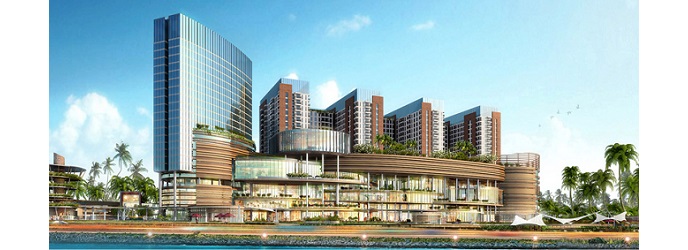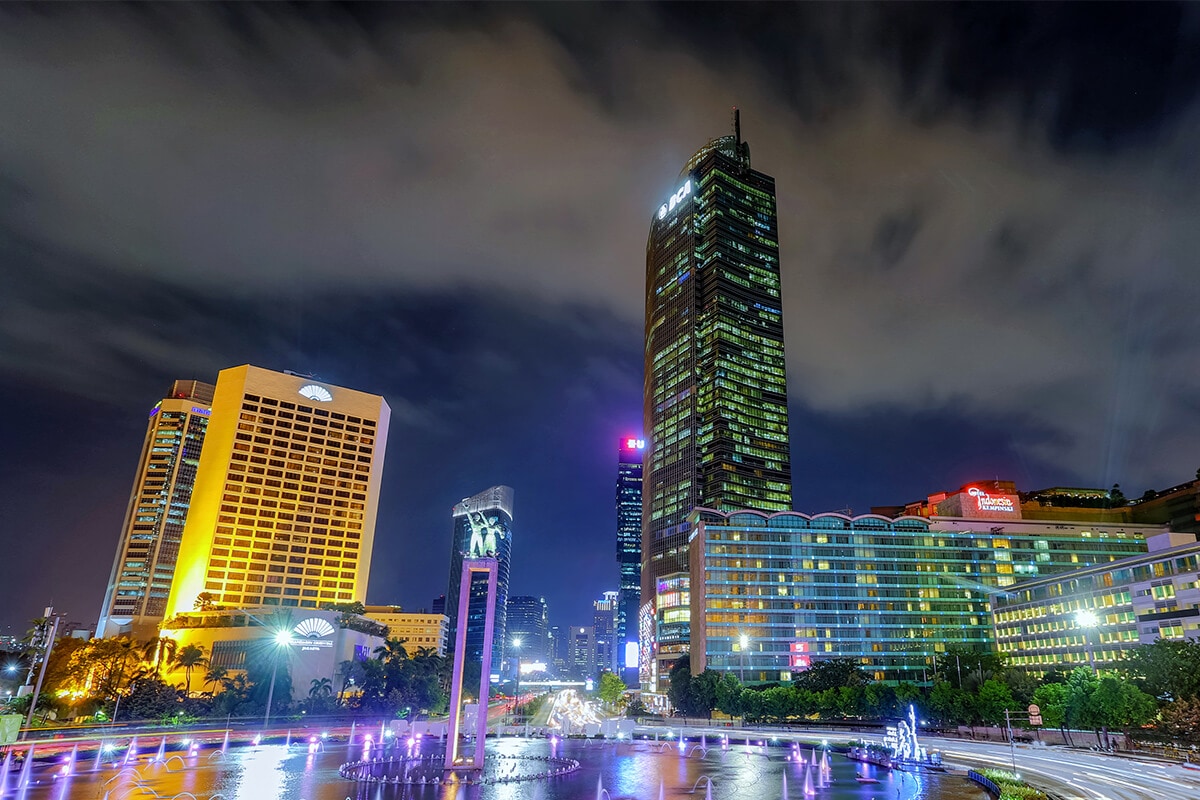BUSINESS
Property
Residential Property Sector Indonesia
With sustained economic growth encouraging an expanding middle class, while the nation's demographic composition implies that there will be millions of first-time home buyers, Indonesia's residential property sector has plenty of room for growth in the decades to come. While Indonesian authorities tried to curb domestic property demand - particularly due to the excessive price growth - in the years 2013 and 2014 to avert the possible bursting of a property bubble, the same authorities started to implement measures to boost Indonesia's property sector in 2015 and 2016 after growth in the sector had slowed considerably amid the country's economic slowdown, and dragging down other sectors within the Indonesian economy (for example the ceramics and cement industries).
After the Indonesian economy experienced a sluggish year in 2009 due to the impact of the global financial crisis, the economy thrived again at +6 percent (y/y) levels in the years 2010-2012. One of the sectors that grew rapidly amid robust macroeconomic growth was Indonesia's property sector (in this article we focus on the residential property sector). Listed property developers on the Indonesia Stock Exchange posted impressive corporate earnings in the years 2010-2013 (and these earnings were well received by investors, hence shares of property developers surged). Meanwhile, Indonesia's property prices surged accordingly in these years. It is estimated that between 2011 and 2013 average prices in the residential property sector of Indonesia surged by an annual 30 percent.Robust and structurally high economic growth goes hand in hand with industrialization and urbanization. Meanwhile, the 270 million population of Indonesia is becoming richer (or less poor) as economic growth, industrialization and urbanization provide new employment opportunities. And when people's per capita GDP and purchasing power rise, they start consuming more electronic devices (such as air conditioners and refrigerators). Moreover, the Indonesian government is eager to raise the country's electrification ratio to 100 percent in an effort to encourage economic and social development. In sum, demand for power grows rapidly across Indonesia.What Explained Indonesia's 'Hot' Residential Property Sector in these Years?
There are five basic factors that supported impressive growth of the country's residential property sector in the years 2010-2012. Please note that these factors are still relevant for future growth of Indonesia's property sector
Firstly, residential property growth requires macroeconomic growth (and stability) as per capita GDP, purchasing power and consumer confidence need to rise before an increasing amount of people can afford to buy a house. In this context, property developers will also be eager to invest (hence there consists a supply-demand chain). As mentioned above, Indonesia's gross domestic product (GDP) growth recovered back to an annual +6 percent (y/y) growth pace in the years 2010-2012. As a result, about seven million people joined the ranks of the middle class each year. With expanding per capita GDP more and more Indonesians were in a position to purchase property (houses, apartments and condominiums) and as demand outpaced supply, there occurred soaring property prices. It is interesting to add that in 2012 few - to none - analysts, including those from the World Bank and International Monetary Fund (IMF), expected Indonesia's economy to slow down significantly after 2013. Most analysts expected a temporary slowdown in 2013 but rapidly growing economic growth in the following years at +6 percent (y/y) levels.

Secondly, Indonesia has a favorable demographic composition. Not only does the country have a population that numbers over 255 million people (implying an enormous market) that is becoming wealthier over time, but it also contains a young population as about half of the population is below the age of 30 years. This implies that there will be many Indonesians seeking to buy their first property unit in the near to middle term.
Thirdly, in line with the global trend, Indonesia is also experiencing the process of urbanization. Currently, more than half of the Indonesian population lives in urban areas and it is estimated that by 2050 two-thirds of the Indonesian population will live in urban regions (United Nations estimate). Due to this rapid process of urbanization more and more houses, apartments and condominiums need to be built in Indonesia’s urban regions in order to meet future demand. This situation implies that the limited availability of land in the urban centers will give rise to rapidly rising property prices, while developers need to focus on vertical property development (apartments and condominiums). It will also give rise to an increasing amount of property projects around the urban centers or the development of new urban centers (the latter can occur near new infrastructure projects such as the Jakarta-Bandung high-speed railway).
Fourthly, Indonesia has to cope with a housing backlog of 13.5 million property units meaning demand is strong. However, this backlog refers to the lower and middle-segment housing and therefore all of the country's major property developers are interested to build property to cater these lower income house seekers. Some property developers will turn to this segment (as demand for high-end housing fell steeply after 2013) but it is mainly the Indonesian government that is tasked to develop housing for the low and middle-income segments. In April 2015 Indonesian President Joko Widodo launched the “One Million Houses Program”. Through this program the government aims to provide adequate housing facilities to low income citizens. Widodo said he wants to see the construction of ten million new houses between the years 2015-2019 for the country’s low-income people. State-owned housing developer Perumnas is tasked with the construction of these ten million additional houses (and received an IDR 1 trillion capital injection from the government).
SERVICE
Business SetupEPC Service
Sales Support
Market Analysis
Business Matchmaking
Product Regristration
INVESTMENT OUTLOOK
Business LocationBusiness Opportunity
Economic Growth
Political Stability
Domestic Market
Natural Resources
Demographic
Destination




 MULTIVESTINDO
MULTIVESTINDO